Rajasthan is the land of color, celebration and mythical beliefs. One of the most desirable destinations across the globe, this princely state comes out with all its grandeur and splashes of shades during the festival of Gangaur-. Though the festival of Gangaur also is celebrated in some parts of Gujarat and Madhyapradesh also, to get to know the real feel of Gangaur, its better that you visit the heartland of Rajasthan. But how many of us who don’t belong to Rajasthan can tell anything (without checking the internet of course) related with Gangaur?
Though Gangaur is celebrated in quite a large scale, still it’s not that popular like other festivals like Durga Puja or Navratri. Before you plan your itinerary by keeping in mind the time of Gangaur (in the month of Chaitra, somewhere between March and April); do take a quick look through the following points, to know more about this wonderful mélange of faith and fun.
Gangaur commemorates Marital Fidelity
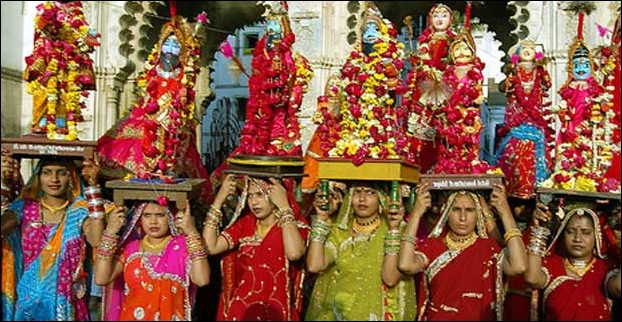
The name Gangaur is derived from ‘Gan’ which is the moniker of Lord Shiva and ‘Gaur’- which stands for Gauri or goddess Paravathy- the wife of Lord Shiva. Though the name of the festival mentions Lord Shiva’s presence, Gangaur is a festival which is predominantly celebrates in honor of goddess Parvathy. In Hindu Mythology, goddess Parvathy stands for marital blessedness, fidelity and fertility.
During 18-day long celebration of Gangaur, women from every parts of Rajasthan keep fast, worship the idol and images of goddess Parvathy and follow other rituals. Their core belief lies in the fact that- due to goddess Parvathy’s blessings upon them, they will also enjoy a life full of marital bliss and their husbands will remain hale and hearty forever.
In this respect, Gangaur has similarities with other such festivals of India- like Karwa Chauth in North India and Savithri Puja in southern parts of the country, where women perform puja and fasting for the longevity of their husbands. The staunch feminists may raise their eyebrows and create a furor over this, but it is what it is. Whether you believe in such customs or find them against women liberalization,observing so many women donning colorful outfits, shiny ornaments and over-all enjoying themselves may put a smile on your face!
Gangaur promotes elopements and choice-marriages
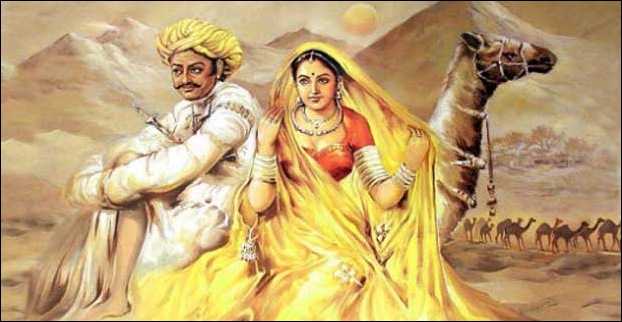
While the married women pray for a solid married life and good health of their respective husbands, the unmarried ones also do the rituals with zest to find ideal partners who would collectively imbibe the qualities of Lord Shiva. Whether their rigorous puja rituals bear any fruits- can be a topic of debate, but what’s the interesting point to note is that centuries ago , Gangaur festival used to resemble a ground of swayamvar or a free-mixing-cum-select-marriage place where people from opposite sexes could mingle with each other and ultimately select the life-partners of their likes. With the passage of time, the norm has now boiled down to-, women pinning for suitable bachelors but the history of this festival shows us that once upon a time Indian society was quite forgiving about the boy-meets-girl type of incidents!
But the sanctity of this custom is still prevalent in the tribal zones of Rajasthan. While devotees from cities like Jaipur, Udaipur or Bikaner celebrate this festival by tweaking the custom in a more somber way, the small villages where there is domination of tribal forces, the older generation encourages the younger ones to elope with their lovers and get married!
Gangaur symbolizes the sweetness of Ghewar
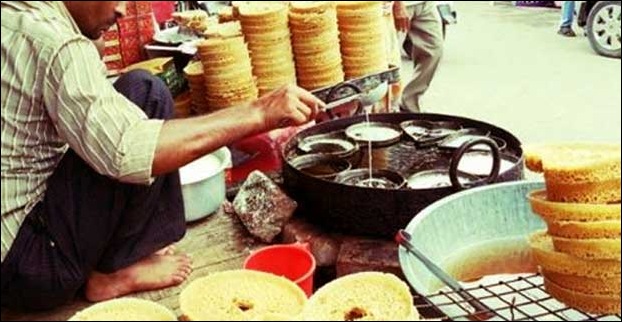
Many of us were not aware of the existence of a special sweet dish called Ghewar till we saw it getting replicated in one the series of Master Chef India. Ghewar is one of the symbols that could be associated with the festival of Gangaur. During the period of celebration, ghewar is being made in every household that is taking part in the puja and then offered to goddess Parvathy. To know about why it is done- one should dive into the legends of Gangaur.
In Hindu mythology, during the month of Chaitra, goddess Parvathy used to visit her parental home from Kailash. As a mark of respect and adoration to PArvathy, her female friends made various sweet dishes including ghewar- upon her stay. Right now, women folk of the household prepare ghewar with much care, go near a well as a part of the ritual, offer the sweet dish as a Prasad to goddess Parvathy, and then distribute it among family members.
Procession is the intrinsic part of Gangaur
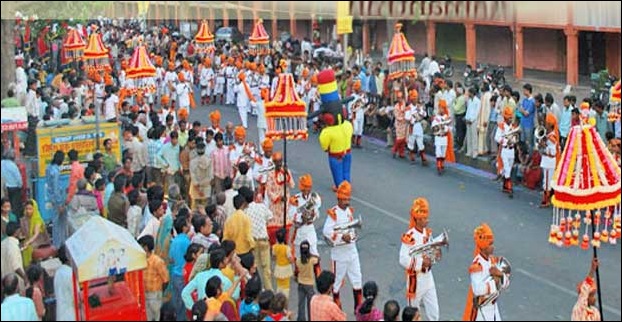
To see the extravagance of processions, one must visit Jaipur where the processions take place for seven days at a stretch. Every morning thousands of women come out of their homes carrying the idols and images of goddess Gauri, gather at Tripolia or formally known as Palace gate, pass by various streets, and end their procession at Talkotra stadium. People from faraway villages come in the city to behold this. Not only women take part, but also palanquins, elephants, bullock carts and horse-drawn chariots adorn the Gangaur procession in Jaipur.
Jodhpur, Udaipur, Northdwara also has their separate style of continuing the ritual of processions. If you are a tourist, then the best way to taste the flavor of Gangaur of various cities would be- package tour. Every year, multiple tours and travel companies as well as the tourism board of the state of Rajasthan, conduct packaged tours for enthusiasts.
The uniqueness of Ghudilas
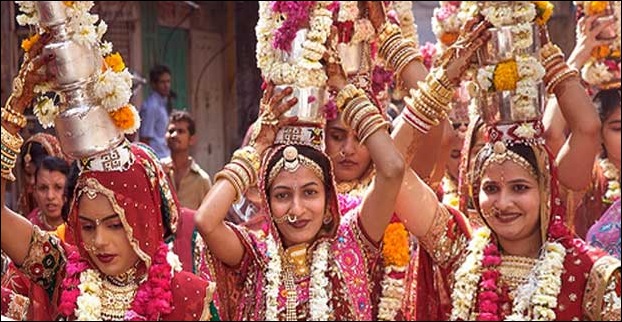
Many of us have seen photos of Ghudilas in calendars during childhood days but back then, we didn’t know that the clay pot which has many holes at the outside and has a blazing lamp inside- is called ghudilas. On the 7th day of the Gangaur, women wear their brightest fineries, color their hands and feet with mehendi, carry ghudlias on their heads, and sing devotional songs in unison. In return, they get pampered by the senior family member in the forms of gifts like- sweets, money, ghee and jiggery.
The USP of Gangaur is that it’s a melting pot of different religions, cast and creed. People irrespective of their religious beliefs or social strata; partake in this festivity with gusto.

Welcome to MithilaConnect, where we curate the art of living, celebrating the vibrant tapestry of life through culture, fashion, food, and everything in between.
